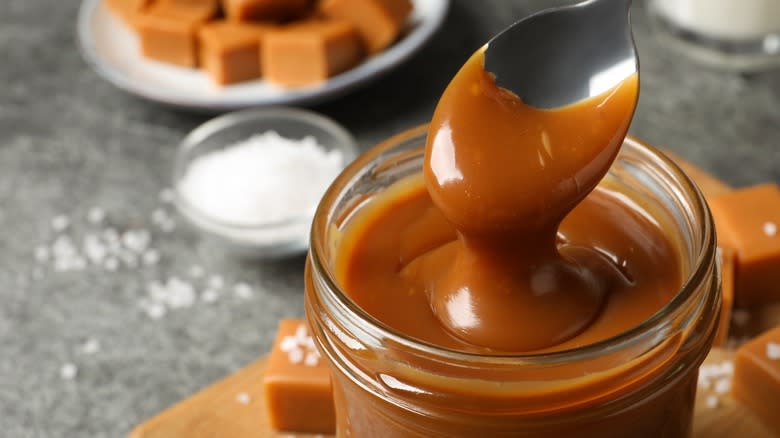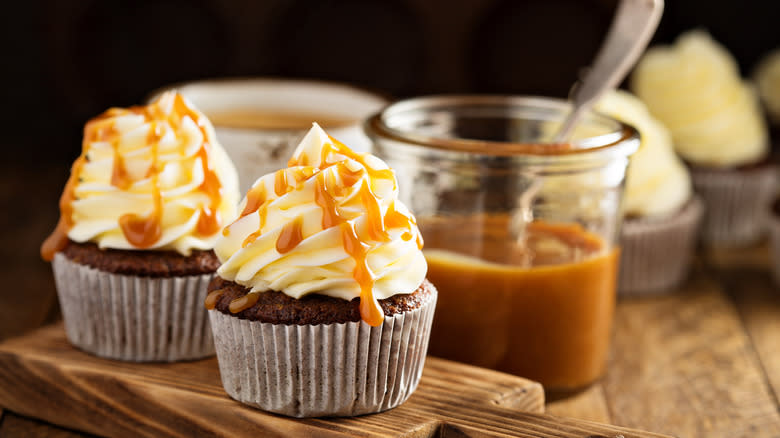The Simple Fix To Thicken Your Butterscotch Sauce Right Up

There's nothing so sweet and delightful as a drizzle of butterscotch sauce on top of an ice cream sundae, or baked into a homemade butterscotch cream pie. But for all the DIY bakers out there, you know how exact your ingredients and timing in baking have to be. So if you're looking to make a butterscotch sauce at home, there's one detail to pay attention to that'll help you make the best, thickest butterscotch sauce possible.
When it comes to making a thick butterscotch sauce, the key to thickening it up is all in the timing. Butterscotch sauce doesn't need much time to thicken when it's cooked at medium heat: only 3 minutes at a simmer. Since it doesn't take much time to cook, keep your eye on the saucepan. It'll just need a little stirring to come together, but stir too much or remove the sauce from the heat too soon and you could get a soupy, liquidy butterscotch sauce.
Read more: Cake Hacks Every Baker Will Wish They Knew Sooner
Butterscotch Sauce Vs Caramel Sauce

Although they may look similar in color and offer the same liquid sugary goodness, butterscotch and caramel sauce are not the same, with one key ingredient swap that differentiates the two. While caramel sauce is cooked with white sugar, butterscotch sauce uses brown sugar. This gives butterscotch a richer, more complex sweetness than caramel. And if you can use dark brown sugar, your butterscotch sauce's flavor will turn out even stronger.
Since it can be tough to determine the desired thickness of butterscotch sauce while cooking, get exact by using a candy thermometer. You want your butterscotch sauce to reach a temperature of 225 degrees Fahrenheit before removing it from the heat to cool and thicken up some more. Remember, the butterscotch sauce will continue to thicken even after it's removed from the heat. If the sauce cools down and you still find it to be too thin, then it's undercooked. You can place it back on the heat for a bit to let it thicken up even more. If it's too thick, gradually add a bit more cream until it reaches the desired consistency.
Ways To Use Your Homemade Butterscotch Sauce

Now that you have your thick, rich butterscotch sauce, the fun part is getting creative with how you use it. A butterscotch drizzle on top of a scoop of ice cream is the classic way to go, but you can also incorporate butterscotch sauce into a variety of sweet treats. Try adding butterscotch to chocolate chip cookies or making homemade butterscotch fudge. For a boozy twist, try your hand at making a double date cake with whiskey butterscotch sauce. And if you just can't wait until dessert to enjoy your homemade butterscotch sauce, indulge at breakfast time by making apple butterscotch baked french toast!
During the holidays, you can even develop a twist on a classic pie favorite by adding butterscotch to a pecan pie filling. Just remember to mind the 3-minute cooking time and keep watch when making homemade butterscotch sauce. Then you'll be set with a thick, gooey homemade butterscotch sauce to enjoy as you please.
Read the original article on Daily Meal.

